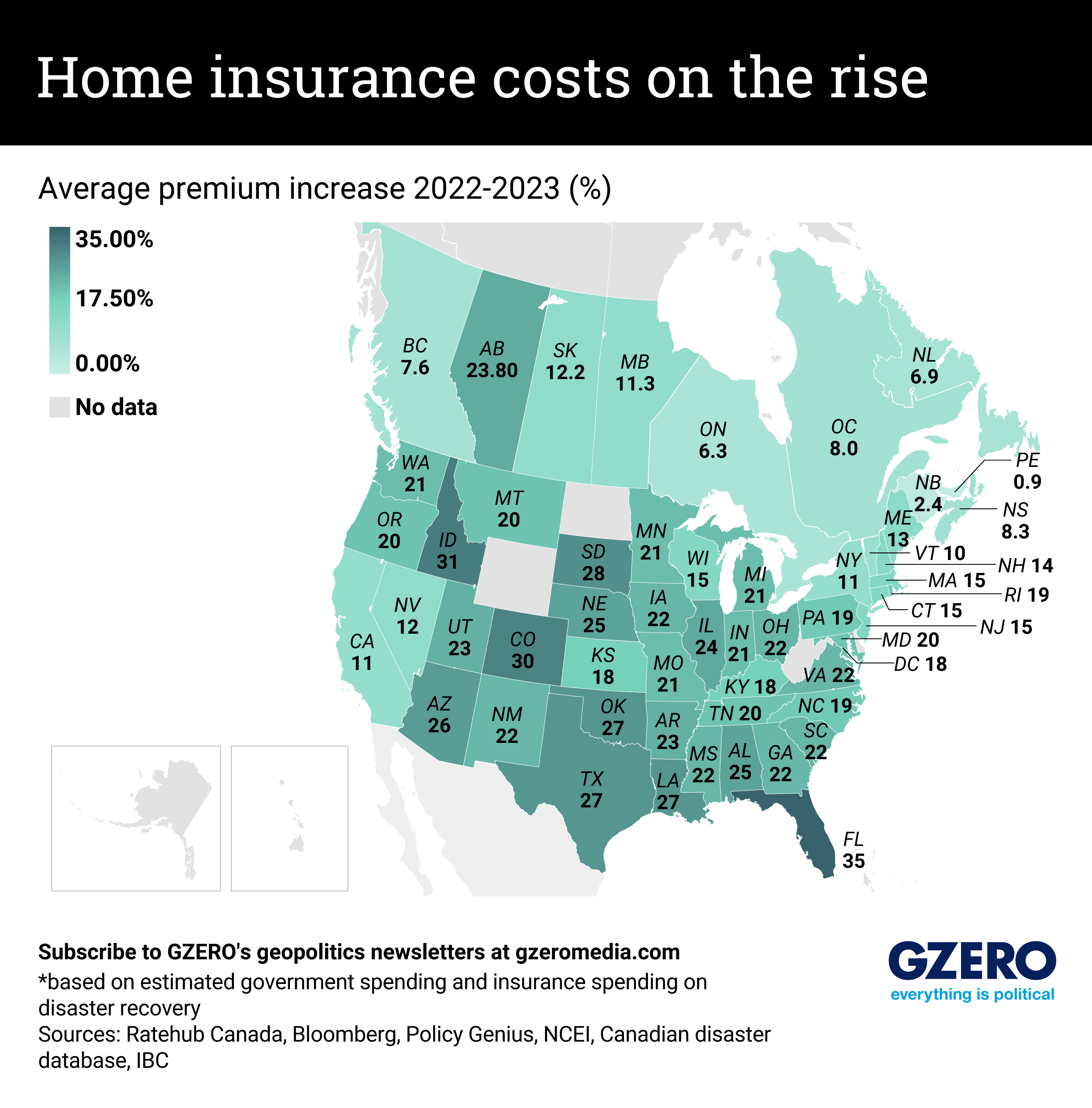April 04, 2024
From devastating hurricanes and ceaseless wildfires to catastrophic floods, natural disasters are increasing in frequency and cost in Canada and the US. As climate change makes disasters more frequent and destructive, insurers are having to raise rates and reduce coverage.
In the US, the home insurance industry has had three straight years of underwriting losses. Insurance rates rose an average of 21% in 2023 as a response, with some insurers in disaster-prone places like California and Florida ceasing to write new policies altogether. As a result, homeowners are forced to pay higher premiums for the fewer insurance options that remain.
In Canada, last summer’s record wildfires compounded with historic floods, costing more than $3.1 billion in insured damage and spiking rates in Alberta, Saskatchewan, Manitoba, and British Columbia.
For this week’s Graphic Truth, we looked at how much insurance rates have risen around the US and Canada.
More For You
Nearly four years into Russia's invasion of Ukraine, the push to end the war is intensifying. The past few weeks produced not one but two proposals.
Most Popular
Sponsored posts
The AI economy takes shape
What's Good Wednesdays
What’s Good Wednesdays™, December 3, 2025
Walmart sponsored posts
Walmart's $350 billion commitment to American jobs
- YouTube
Ian Bremmer breaks down why the latest Russia-Ukraine “peace push” is headed back to Moscow and why the outlook is bleak.
Luis Fernando Cerimedo, advisor of Presidential candidate Nasry Asfura of the National Party of Honduras (PN), speaks during a press conference after the general election, in Tegucigalpa, Honduras, December 1, 2025.
REUTERS/Jose Cabezas
There are close presidential races, and then there’s the one in Honduras, where just 515 votes separate the top two candidates following Sunday’s election in the Central American nation.
© 2025 GZERO Media. All Rights Reserved | A Eurasia Group media company.
